Florists can’t get enough of the beautiful, natural fresh cut flowers that come from this one-acre farm in east Ayrshire. The grower, Andrea Jones, explains why local and seasonal is proving more than a match for exotic and expensive
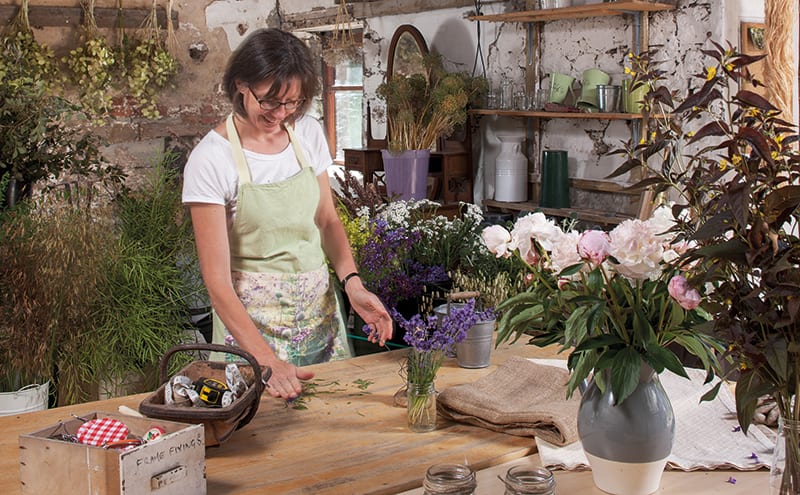
DETAILS
Photography Neale Smith
Art direction Gillian Welsh
Words Catherine Coyle
Back when Andrea Jones was a child growing up in Dumfries and Galloway, it was normal for her to come home from school and ‘do a line of digging’ before dinner or starting any homework.
Her parents owned a smallholding, rearing cows and growing fruit and vegetables, so there was always a lot of manure to work into the soil, and the whole family helped out. “I learned how to look after the soil and how to grow things when I was very young,” she recalls. “We were totally self-sufficient in fruit and veg when I was growing up.”
She moved to the city as a young adult, but her longing for the rural life, fresh country air and wide-open spaces soon brought her to Ayrshire, where she and her partner and two teenage sons now live.
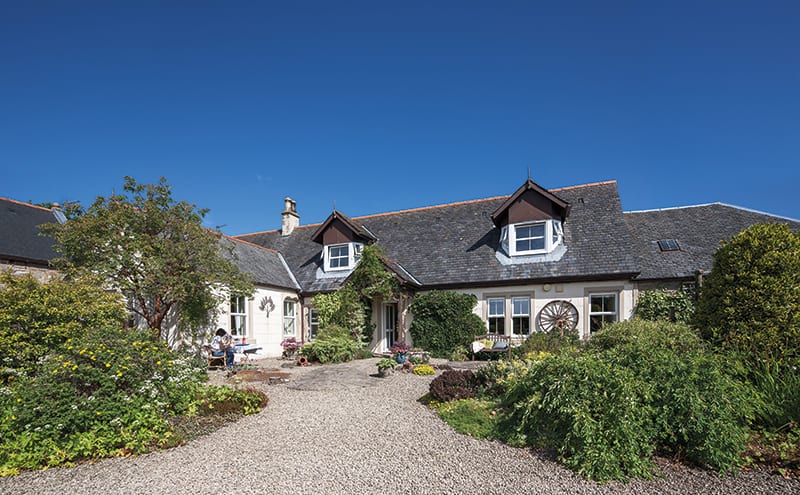
Self-sufficiency and caring for the land is something she has passed on to her own children who, like her, were encouraged to take up a wheelbarrow and help out in the garden from an early age. But it is in her own life that it has had the biggest impact, as what started out as a hobby has now become a career. “I’m a trained speech and language therapist, but I split my week between my practice and my business, Mayfield Flowers, cultivating fresh cut flowers from my one-acre garden.”
Andrea has just celebrated Mayfield’s tenth birthday, a significant achievement considering that when she started out there was only one other flower farmer in Scotland; it was clearly not an industry that anyone believed would thrive. Undeterred, she took her love for growing and gardening and her passion for protecting the environment and turned it into a job that gives her both creative and almost spiritual satisfaction.

“With flowers, you either seem to get florist shops that are very high-end and expensive, or you have the supermarkets, where the selection is nothing special and doesn’t reflect the seasons,” she says. “So I started looking into it, and I discovered just how massive the global cut-flower industry actually is; flowers are intensively grown, using chemicals, and then shipped all over the world. I wanted to do the opposite, celebrating what can be cultivated locally and focusing on sustainability and seasonality.”
Andrea began small, basing herself in the garden of a friend who was happy to lend her the space on the condition she managed it herself, and then branching out through the hedge to the neighbour’s garden when more space was required. “Even then, it quickly became obvious that this was too small for what I wanted to do,” she recalls. “Then this place came up, with an acre of land, so we moved and I established my flower field here.”
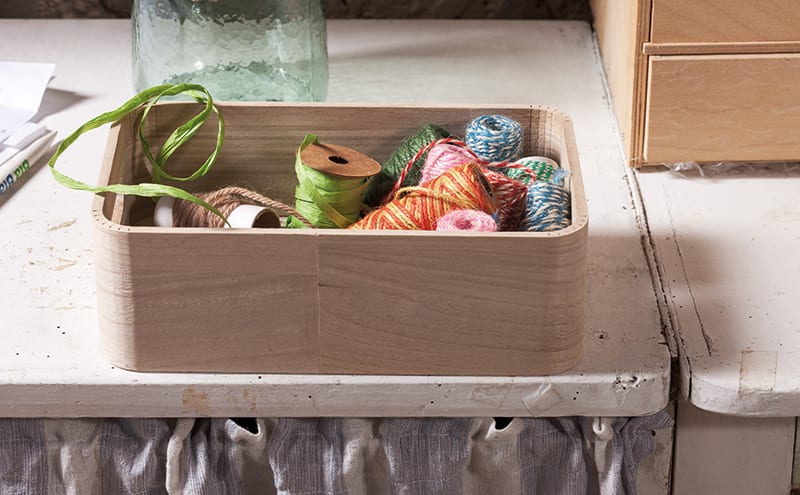
The farm, just outside the village of Stewarton in Ayrshire, had already been landscaped, with a mature garden, outbuildings in good condition and a field that would form the new flower farm. Despite all of this, there were teething problems. “Our first year here, it was very wet,” recalls Andrea. “It was too wet to plough, in fact. It was difficult to know what to do, because I was aware that if I didn’t plant bulbs soon, I’d have nothing to sell in the spring.”
Somehow she got through it, but it was a reminder of the power of the weather to make or break a harvest. Here in south-west Scotland, the flower field generally enjoys relatively mild conditions, aided by being on a gently sloping south-facing site. Andrea grows flowers such as astrantia and astilbe which thrive in the wet conditions that often face Scottish gardeners, allowing her to utilise the land more effectively.
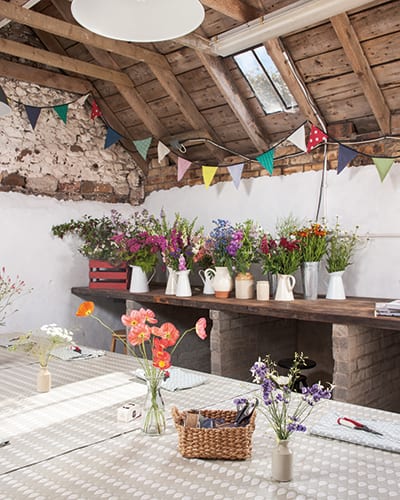
Everything is decided by the seasons: “My favourites are the sweet peas, lily of the valley, lilacs, misty lavender, larkspur – anything with scent!” she says. But the flower field changes almost daily, so the choice is rich and abundant. She grows a huge variety, including the likes of narcissus, ranunculus and anemones bursting with colour, rudbeckia, honeysuckle and many more.
Andrea’s approach to farming is rooted in allowing the environment to do what it is supposed to do. To that end, she operates a ‘no dig’ growing system, which is completely at odds with what she learned to do as a child, but very much in tune with her own personal ethos. “When you dig the soil, you destroy its structure,” she explains. “A no-dig system also minimises the amount of weeding you need to do, making my task easier.”
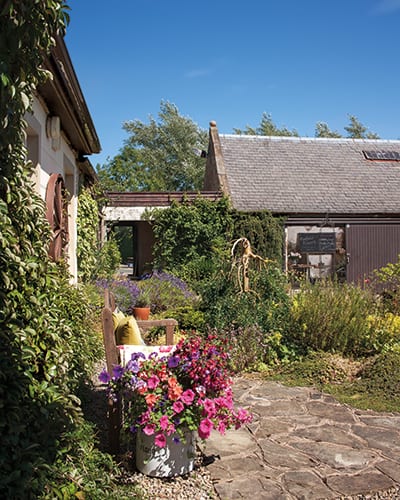
Everything is decided by the seasons: “My favourites are the sweet peas, lily of the valley, lilacs, misty lavender, larkspur – anything with scent!” she says. But the flower field changes almost daily, so the choice is rich and abundant. She grows a huge variety, including the likes of narcissus, ranunculus and anemones bursting with colour, rudbeckia, honeysuckle and many more.
Andrea’s approach to farming is rooted in allowing the environment to do what it is supposed to do. To that end, she operates a ‘no dig’ growing system, which is completely at odds with what she learned to do as a child, but very much in tune with her own personal ethos. “When you dig the soil, you destroy its structure,” she explains. “A no-dig system also minimises the amount of weeding you need to do, making my task easier.”
By building from the top, the soil is more aerated, naturally occurring seeds and plant life are allowed to thrive, less watering is required and pests such as slugs are less of a problem. In her research, Andrea looked to Somerset-based gardener, writer and specialist Charles Dowding for information and inspiration. His organic practice fitted with her philosophy and allowed her to cultivate beds that would give her an all-outdoor farm.
“It took about 80 tons of compost to cover the area,” she says, remembering the hard graft that went into setting up the farm ten years ago. She now plants between 6,000 and 10,000 seedlings at the beginning of each year. If that sounds like a worrying number of plastic plant pots, fear not: she barely uses these at all. Instead, she has a hand-held soil blocker – a device that stamps out a small cube of soil with a dimple on top where the seed sits. As the seedling grows, the cube can be transferred to a bigger soil block before being planted in the ground. It means there is no soil wastage – or plastic pots.
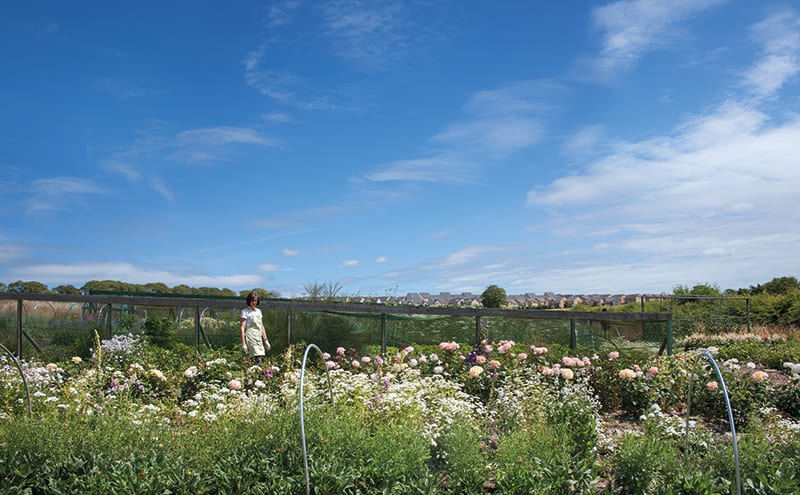
Growing outdoors in the wind and the sun allows the flowers to take on a natural form, which really appeals to Andrea. Her buyers appreciate it too – she supplies a lot of independent florists who come to her for blooms that are unusual both in variety and in shape. “I also run workshops, usually once a month, from one of my sheds where people can learn how to make their own bouquets or to discover more about cut flowers,” she adds.
“I make gift bouquets that can be delivered nationally and floral arrangements for funerals. Our bouquets are picked to order and I can also provide loose flowers for people who want to make up their own arrangements.”
The popularity of farm-grown cut flowers has increased significantly in the ten years since Andrea began, and there are now more than 60 growers in the country. There are also networks such as Flowers from the Farm which links up buyers with flower farmers around Britain. It all shows that eco-consciousness and a willingness to research and invest in growing locally, seasonally and organically is beginning to change the way people think about the global flower industry.
“My job as a speech and language therapist is all about communication and, although it doesn’t appear similar, working as a flower farmer is also about connecting to people,” says Andrea. “Who doesn’t smile when they’re given a bunch of flowers?”



